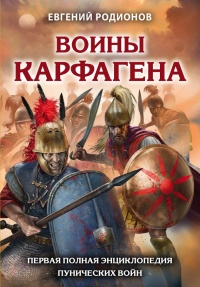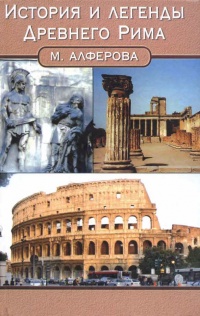Книга История Древнего мира. От истоков цивилизации до падения Рима - Сьюзен Уайс Бауэр
Шрифт:
Интервал:
Закладка:
29. Olmstead, History of Assyria, p. 423.
30. Phillips, «The Scythian Domination in Western Asia», p. 132.
ГЛАВА ПЯТЬДЕСЯТ ПЯТАЯ. МИДИЙЦЫ И ПЕРСЫ
1. Konstantinos Staikos, The Great Libraries: From Antiquity to the Renaissance (3000 BC to AD 1600) (2000), p. 13.
2. Condensed slightly from Benjamin R. Foster, Before the Muses: An Anthology of Akkadian Literature, vol. 2 (1996), p. 714.
3. Frame, p. 255.
4. Ibid., p. 258.
5. Хронологически размещенные эпиграфы из John Malcom Russell, The Writing on the Wall: Studies in the Architectural Context of Late Assyrian Palace Inscriptions (1999), p. 159.
6. Herodotus, 1.98.
7. A. T. Olmstead, History of the Persian Empire (1959), p. 30.
8. Starr, pp. 267–270.
9. Saggs, Babylonians, p. 161. 10. Frame, p. 260.
n. Saggs, Babylonians, p. 114.
12. Ezra 4:9–10, NIV.
13. P. Calmeyer, «Greek Historiography and Acheamenid Reliefs», in Achaemenid History II: The Greek Sources, ed. Heleen Sancisi-Weerdenburg and Amelie Kuhrt (1987), p. 11.
14. David Frankel, The Ancient Kingdom of Urartu (1979), p. 19.
15. Phillips, p. 135.
16. 2 Kings 23.
17. Herodotus, 1.105.
18. Ibid., 1.106.
ГЛАВА ПЯТЬДЕСЯТ ШЕСТАЯ. ПОКОРЕНИЕ И ТИРАНИЯ
1. Buckley, p. 37.
2. Phaedo 109b, quoted in Robin Waterfield, Athens (2004), p. 41.
3. Pomeroy et al., p. 92.
4. Herodotus, 4.156–157.
5. Ibid., 4.159.
6. Fragment 5, quoted in Buckley, p. 66.
7. Fragment 6, quoted in Buckley, p. 67.
8. Herodotus 6.52.
9. Luckenbill, Ancient Records, vol. 2, pp. 291–292.
10. Herodotus, 6.57.
11. Lycurgus 15, in Plutarch, Greek Lives, translated by Robin Waterfield (1998), p. 24.
12. Lycurgus 12–14, in Plutarch, Greek Lives, pp. 18–22.
13. Lycurgus 10, in Plutarch, Greek Lives, p. 18.
14. Herodotus, 7.104.
15. Waterfield, p. 39.
16. Eusebius, Chronicle, in A. Schoene and H. Petermann, trans. Armeniam versionem Latine factam AD libros manuscriptos recensuit H. Petermann (1875), pp. 182–183.
17. Waterfield, p. 43.
18. Eusebius, Chronicle, p. 198.
19. Thucydides, 1.125.
20. Thucydides, 1.126.
21. Solon 12, in Plutarch, Greek Lives, p. 55.
22. Athenian Constitution, translated by H. Rackham, 2.1–3, in Aristotle in 23 Volumes, vol. 20.
23. Solon 17, in Plutarch, Greek Lives, p. 61.
24. Lycurgus 15, in Plutarch, Greek Lives, p. 25.
25. Michael Gagarin, Drakon and Early Athenian Homicide Law (1981), pp. 19–21.
26. Solon 1, in Plutarch, Greek Lives, p. 46.
27. Solon 14, in Plutarch, Greek Lives, p. 57.
28. Buckley, pp. 91–92.
29. Solon 6, in Plutarch, Greek Lives, p. 50.
30. Herodotus, 1.29.
31. Solon 25, in Plutarch, Greek Lives, pp. 69–70.
ГЛАВА ПЯТЬДЕСЯТ СЕДЬМАЯ. НАЧАЛО И КОНЕЦ ИМПЕРИИ
1. Livy, 1.15, Early History of Rome, p. 50.
2. R. M. Ogilvie, «Introduction: Livy», in Livy, Early History of Rome, p. 18.
3. Livy, 1.1–1.2, Early History of Rome, pp. 34–36.
4. Livy, 1.15, Early History of Rome, p. 50.
5. Livy, 1.16, Early History of Rome, p. 51.
6. Livy, 1.19, Early History of Rome, p. 54.
7. Dionysius of Halicarnassus, Roman Antiquities, vol. 1, Books I–II (1937), 2.62.
8. Livy, 1.33, Early History of Rome, p. 72.
9. Dionysius of Halicarnassus, Roman Antiquities, vol. 2, Books III–IV (1939), 3.45.
10. Gary Forsythe, A Critical History of Early Rome: From Prehistory to the First Punic War (2005), pp. 39–40.
11. Salvatore Settis, ed., The Land of the Etruscans: From Prehistory to the Middle Ages (1985), p. 30.
12. Jacques Heurgon, Daily Life of the Etruscans (1964), p. 136.
13. Christopher S. Mackay, Ancient Rome: A Military and Political History (2004), p. 12.
14. Dionysius of Halicarnassus, Roman Antiquities, vol. 2, 3.61–62.
15. Ray Kamoo, Ancient and Modern Chaldean History: A Comprehensive Bibliography of Sources (1999), p. XXXI.
16. Luckenbill, Ancient Records, vol. 2, p. 417.
17. Kamoo, p. xxxiii; Luckenbill, Ancient Records, vol. 2, p. 419.
18. Herodotus, 1.103.
19. Christopher Johnston, «The Fall ofNineveh», Journal of the American Oriental Society 22 (1901), p. 21.
20. Diodorus Siculus, Bibliotheca Historica, vol. 1 (1956), p. 171; Paul Haupt, «Xenophon’s Account of the Fall of Nineveh», in Journal of the American Oriental Society 28 (1907), p. 101.
21. Luckenbill, Ancient Records, vol. 2, p. 420.
22. Nah. 2:6–10, 3:3, 3:19, NIV.
23. Assmann, p. 338.
24. 2 Kings 23:29, NIV.
25. 2 Chron. 35:21, NIV.
26. Luckenbill, Ancient Records, vol. 2, p. 421.
27. 2 Kings 23:31–35.
28. Verbrugghe and Wickersham, p. 58.
29. Jer. 46:2–6, NIV.
30. Donald B. Redford, From Slave to Pharaoh: The Black Experience of Ancient Egypt (2004), p. 146.
ГЛАВА ПЯТЬДЕСЯТ ВОСЬМАЯ. НЕДОЛГОВЕЧНАЯ ИМПЕРИЯ
1. Josephus, The Antiquities of the Jews, 10.6.1.
2. Jer. 36.
3. Quoted in Ronald H. Sack, Images of Nebuchadnezzar: The Emergence of a Legend (2004), p. 49. Я крайне благодарна мистеру Саку за сделанную им тематическую организацию древних и классических источников по царствованиям Навуходоносора и Набонида.
4. Herodotus, 2.158.
5. Clayton, p. 196.

























